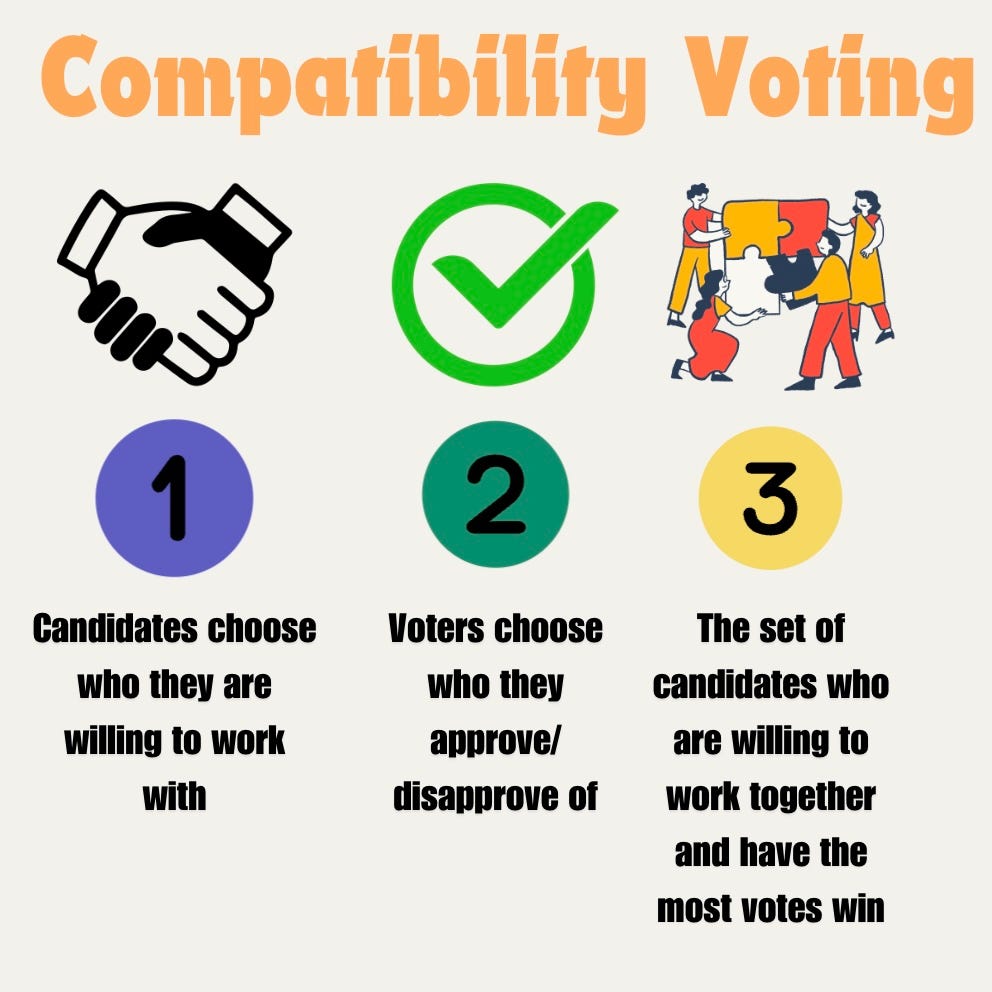How to Solve Political Parties with Compatibility Voting

Earlier this year I was elected to a council by the Zuzalu ecosystem to manage a fund of 1 million dollars (worth more like 500k now, crypto lol) of Vitalik Buterin’s Eth. The vote consisted of “approval voting” where someone could select candidates who they approve of. Whichever 6 names had the most approvals were selected.
The issue: We can end up stuck with people who we find impossible to work with.
If we are to hold another election, there is a disincentive from participating if this remains the same. This is not the first time this has happened.
This issue is connected to the original split of Zuzalu. During the ZuConnect gathering in Istanbul, we knew that the community leaders who would be elected in the case of a vote did not share the same vision and would rather quit than be forced into a team they disagreed with.
This is part of why Zuzalu decentralized into many groups (in my estimation, 15 groups with 5,000 people in the movement worldwide.) This decentralization may have been for the best. However, trying to have a singular central council for disbursing funds to the entire ecosystem simply resurfaces the same problem.
Perhaps forcing people who disagree to work together is a good thing that leads to greater diversity. Maybe in the future if we are electing a larger number of individuals then we could explore proportional representation of political parties. It would be intriguing to research examples where this worked well or where it led to paralysis due to a lack of clear direction.
Meanwhile, the two party system in the USA does accomplish something when elected… only to have its accomplishments dismantled when the other party gains power in the next cycle.
Could we find a solution that doesn’t involve political parties at all?
I suggest a voting system that ensures a group of compatible electees without the need for political parties. We should elect the set of individuals with the most approval who are willing to work together.
Here are the proposed steps:
-Individuals join the race
-With all the individuals entered, each individual selects which other individuals they would or would not work with
-Voters participate in approval voting (without needing to see which individuals would work with which)
-The set of individuals who are willing to work together and who have the most total votes are chosen
It’s a simple selection algorithm that does not require any extra considerations on the part of the voters. It also eliminates the need for individuals to spend time coordinating before the election forming parties to run together.
I’ll refer to the selection of a set of individuals who are willing to work together as “compatibility voting” and “compatibility elections.”
I also believe that including “disapproval” voting should be considered so people may mark up to 6 people as -1 vote. After all, political elections often make people ask “who is the least hated?” rather than “who is the most liked?” This may result in more moderate, less controversial individuals who are not the most loved or hated, but the most accepted.
With this system, we may elect a group of individuals who are able to work together without the need for political parties.